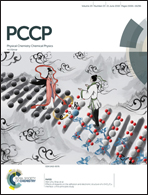Insight into the electronic and mechanical properties of novel TMCrSi ternary silicides from first-principles calculations
Abstract
Transition metal silicides (TMSis) are attractive advanced functional materials due to their low electronic resistivity, high melting-point, excellent mechanical properties and thermal stability. However, the overall performances of binary silicides are not satisfactory enough to meet the requirements of many commercial applications. To overcome this problem, utilizing ternary silicide is a good path to adjust the balance between the overall performances because metallic bond plays a key role in electronic properties. The TM–Si bond enhances the strength, while the alloying element (Cr) can effectively improve the oxidation and corrosion resistances. Therefore, we report the results of electronic, mechanical and thermodynamic properties of stable TMCrSi ternary silicides by using first-principles calculations. First, we found that TMCrSi ternary silicides are dynamically stable based on the phonon dispersion curves. Second, the constructed ternary silicides exhibit better electronic properties because of the formation of TM–Cr metallic bond. Importantly, these ternary silicides not only show high strength, but also have better ductility. Additionally, the Debye temperature and heat capacity of TMCrSi ternary silicides are discussed. Finally, through our study, we propose that TMCrSi ternary silicides are promising functional materials with potential applications in aerospace, microelectronic and energy storage systems.



 Please wait while we load your content...
Please wait while we load your content...